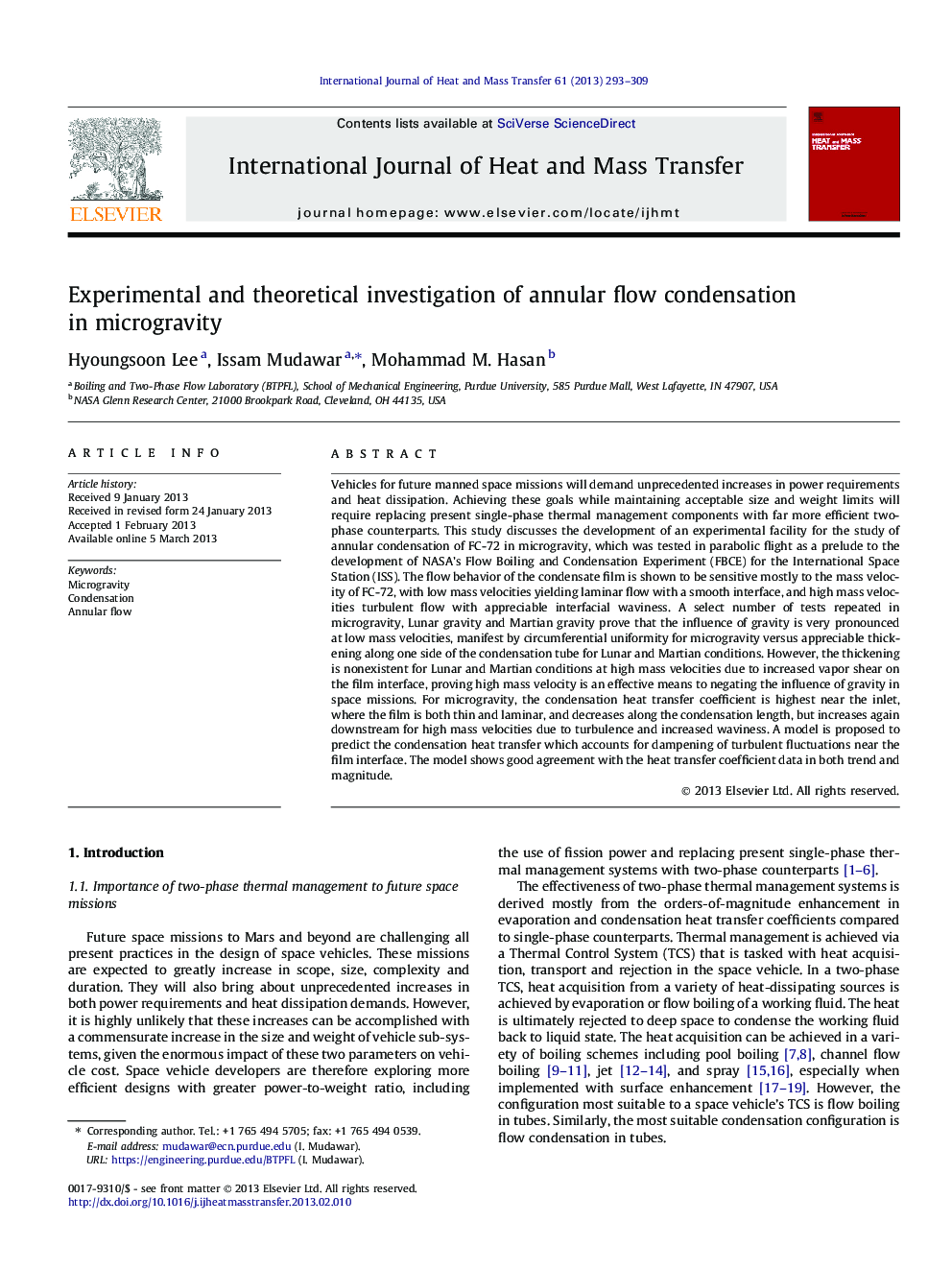| کد مقاله | کد نشریه | سال انتشار | مقاله انگلیسی | نسخه تمام متن |
|---|---|---|---|---|
| 7058919 | 1458081 | 2013 | 17 صفحه PDF | دانلود رایگان |
عنوان انگلیسی مقاله ISI
Experimental and theoretical investigation of annular flow condensation in microgravity
ترجمه فارسی عنوان
بررسی تجربی و نظری تراکم جریان حلقوی در میکرو گرانشی
دانلود مقاله + سفارش ترجمه
دانلود مقاله ISI انگلیسی
رایگان برای ایرانیان
کلمات کلیدی
میکروگرامیت، چگالش، جریان انحرافی،
موضوعات مرتبط
مهندسی و علوم پایه
مهندسی شیمی
جریان سیال و فرایندهای انتقال
چکیده انگلیسی
Vehicles for future manned space missions will demand unprecedented increases in power requirements and heat dissipation. Achieving these goals while maintaining acceptable size and weight limits will require replacing present single-phase thermal management components with far more efficient two-phase counterparts. This study discusses the development of an experimental facility for the study of annular condensation of FC-72 in microgravity, which was tested in parabolic flight as a prelude to the development of NASA's Flow Boiling and Condensation Experiment (FBCE) for the International Space Station (ISS). The flow behavior of the condensate film is shown to be sensitive mostly to the mass velocity of FC-72, with low mass velocities yielding laminar flow with a smooth interface, and high mass velocities turbulent flow with appreciable interfacial waviness. A select number of tests repeated in microgravity, Lunar gravity and Martian gravity prove that the influence of gravity is very pronounced at low mass velocities, manifest by circumferential uniformity for microgravity versus appreciable thickening along one side of the condensation tube for Lunar and Martian conditions. However, the thickening is nonexistent for Lunar and Martian conditions at high mass velocities due to increased vapor shear on the film interface, proving high mass velocity is an effective means to negating the influence of gravity in space missions. For microgravity, the condensation heat transfer coefficient is highest near the inlet, where the film is both thin and laminar, and decreases along the condensation length, but increases again downstream for high mass velocities due to turbulence and increased waviness. A model is proposed to predict the condensation heat transfer which accounts for dampening of turbulent fluctuations near the film interface. The model shows good agreement with the heat transfer coefficient data in both trend and magnitude.
ناشر
Database: Elsevier - ScienceDirect (ساینس دایرکت)
Journal: International Journal of Heat and Mass Transfer - Volume 61, June 2013, Pages 293-309
Journal: International Journal of Heat and Mass Transfer - Volume 61, June 2013, Pages 293-309
نویسندگان
Hyoungsoon Lee, Issam Mudawar, Mohammad M. Hasan,
